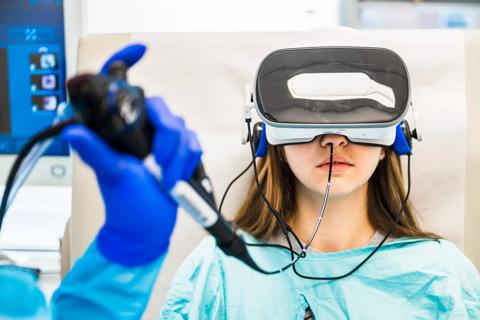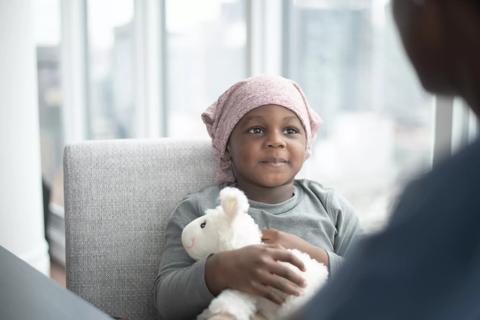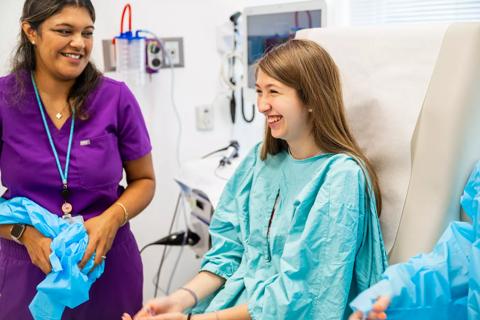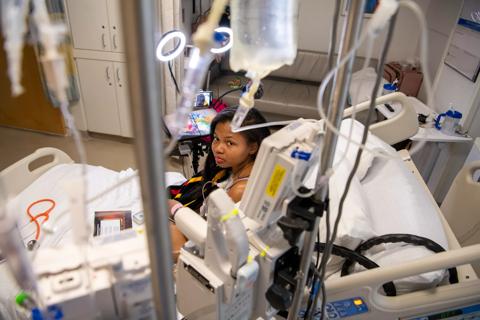A conversation with classroom behavior therapist Danielle Robertson

Danielle (Dani) Robertson spends her days teaching in the early childhood classroom at Cleveland Clinic’s Center for Autism. Consult QD sat down with her to find out why teaching foundational skills brings meaning to her life — and theirs.
Cleveland Clinic is a non-profit academic medical center. Advertising on our site helps support our mission. We do not endorse non-Cleveland Clinic products or services. Policy
What sparked your interest in working with children who have autism spectrum disorder?
After graduating college, I worked as a camp counselor for individuals with various disabilities. It was there that I first met a person with autism and began to understand the disorder. I worked mostly with adults with autism and saw they demonstrated areas of need that could have been helped with earlier intervention. This motivated me to seek ways to expand my skills with younger children on the spectrum.
What is the most rewarding part of your job?
Helping children make progress and seeing the joy this brings to their families. A big part of my job in the preschool classroom is teaching foundational skills that make an impact in the students’ daily lives. Something as small as a child waving can make your whole day.
If someone meets or knows a child who may have autism, what advice do you have to start a conversation?
I think it is important for you to know the possible characteristics a child with autism may have — most notably deficits in the area of social interactions and communication. No two children are the same, so what works for one child may not work for another. The easiest way to socially engage with children with autism is through their interests. I would recommend finding out what they like and start building rapport from there. Keep in mind that just because a child may not demonstrate certain skills such as making eye contact does not mean that he or she does not want to interact. My students constantly amaze me. They should never be underestimated!
Do you have any personal stories to share?
My cousin was diagnosed with autism about five years ago when she was 21 years old. As a child, the doctors never gave her a diagnosis and my family never understood why she had such limited interests or difficulty understanding social cues or differences in speech, such as sarcasm. When I started working with the population, it clicked that many of the symptoms I saw were those that my cousin had. I communicated this with my family, which led to my cousin receiving a diagnosis and support.
What is something your colleagues may be surprised to learn about you?
I am currently in my last semester of graduate school, and will be earning my Master of Education in Foundations in Behavior Analysis this spring. I hope to continue my work at Cleveland Clinic as I pursue becoming a Behavior Analyst.
What are you curious about?
My experience with autism and applied behavior analysis has been almost entirely in the applied setting. I would like to explore the experimental side of the field. I have learned about the various experimental designs and implemented behavior interventions. I’m interested in how combining these factors could lead to positive student outcomes.
How do you de-stress?
I would like to say that I de-stress by doing yoga (definitely on my to-do list), but unfortunately I am still working to fit that in. I enjoy my down time by relaxing at home, binge-watching a Netflix series and playing with my cats!

IBAT inhibitors, elastography and more

Programs bring age- and size-appropriate technology to children

Unpacking advancements and identifying drivers of inequity

Self-efficacy mindset, burst therapy and increased biofeedback may help improve outcomes

Pediatric and adult gastroenterologists offer team care for patients with eosinophilic esophagitis

New guidelines expand on psychosocial, sexual health, cognitive and other issues

Consensus conference begins work on new recommendations for clinical care and research

Systemic change needed to improve health outcomes for parents and children, say researchers